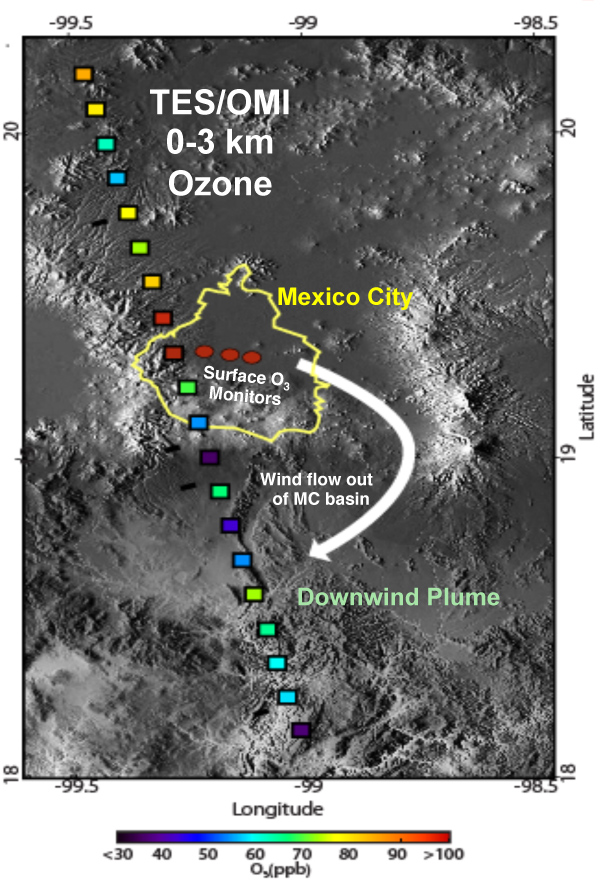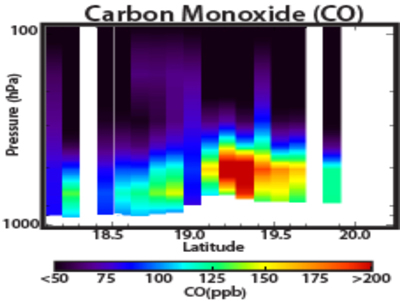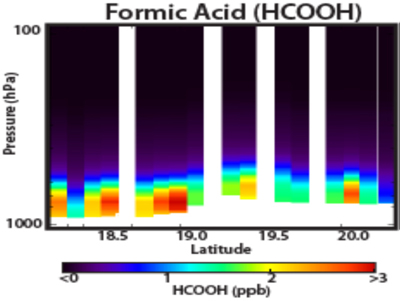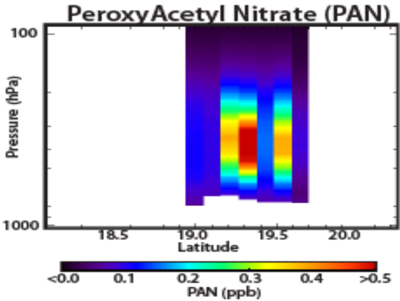
TES/OMI 0-3 km Ozone October 16, 2013
Here we show TES measurements from Mexico City for October 16, 2013, a day with stagnant, stable air in the boundary layer allowing for the buildup of emissions and rapid pollution production within the greater Mexico City basin (~19.1-19.6 degrees latitude). The TES orbit path also intersected the plume of pollution that was carried southward out of the city (~18.3-18.9 degrees latitude) by the prevailing winds. TES measurements of key chemical species allow us to examine not only air quality within the megacity, but also the regional and larger-scale implications of Mexico City pollution as it is transported out of the urban area.
The jointly retrieved TES/OMI near-surface ozone product shows very high ozone (~120 ppb) in Mexico City. Ozone at these levels is considered very hazardous to human health.
TES carbon monoxide, methanol, & formic acid (ozone precursors) are also elevated, as is the nitrogen reservoir peroxyacetyl nitrate (PAN).


Downwind, TES data show that most trace gases are diluted in the plume, but formic acid concentrations are higher than in the city, which may indicate secondary production from organic aerosol.

PAN drives ozone production far from source regions, so the large PAN concentrations suggest that Mexico City pollution has larger-scale impacts.

April 2015